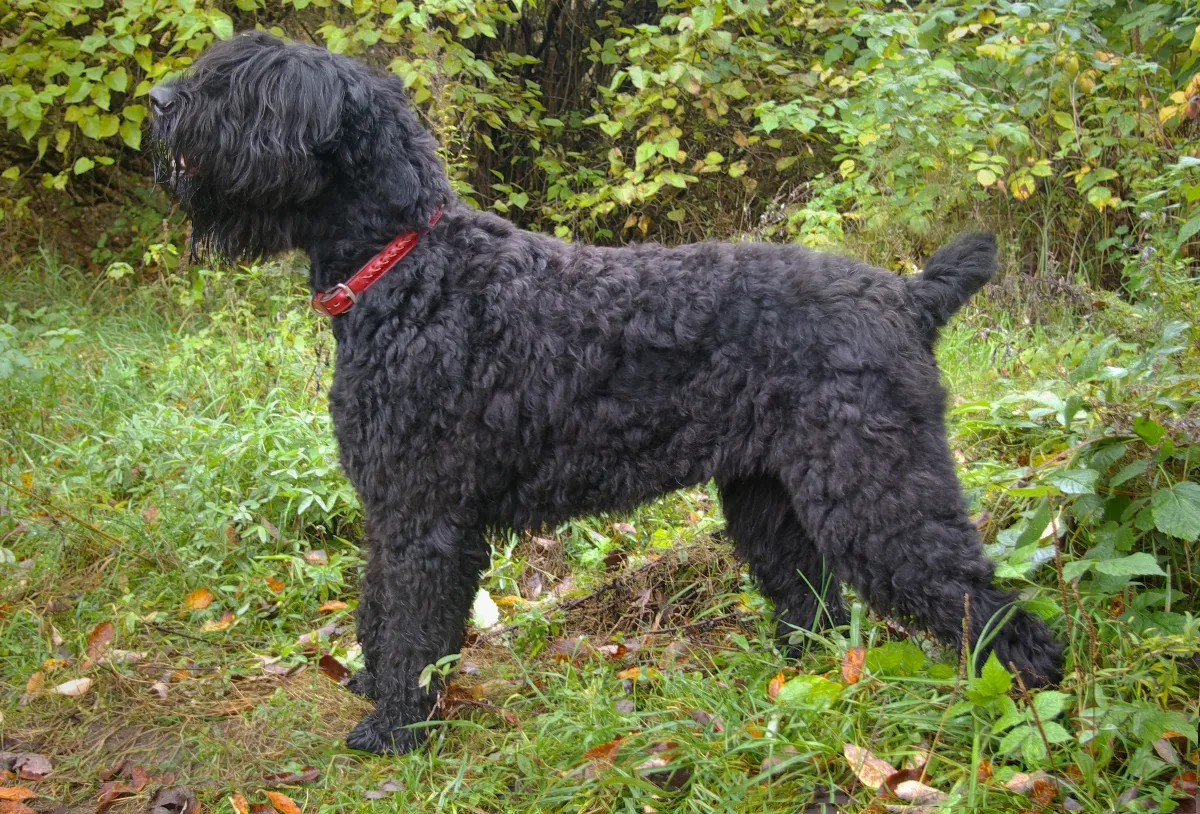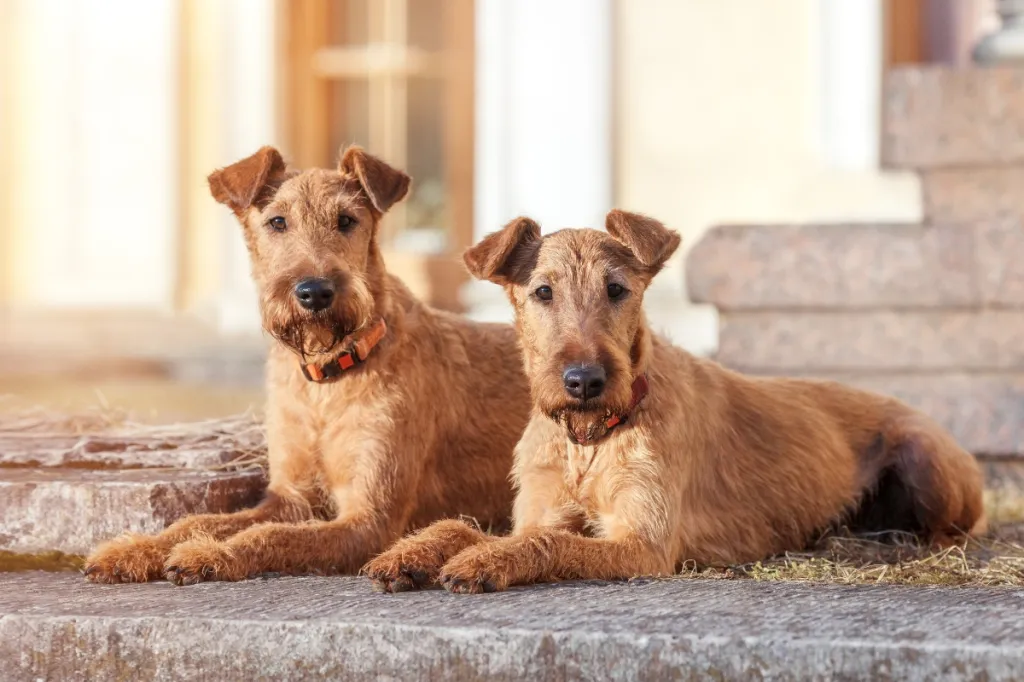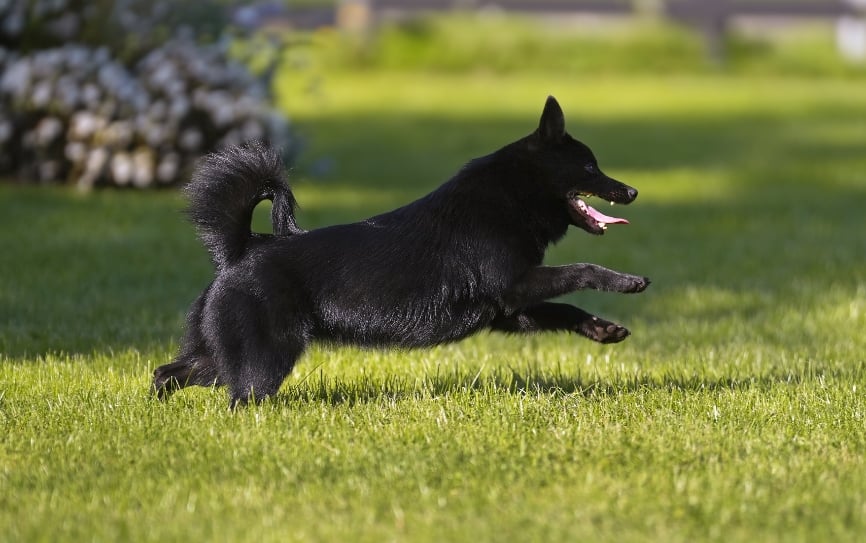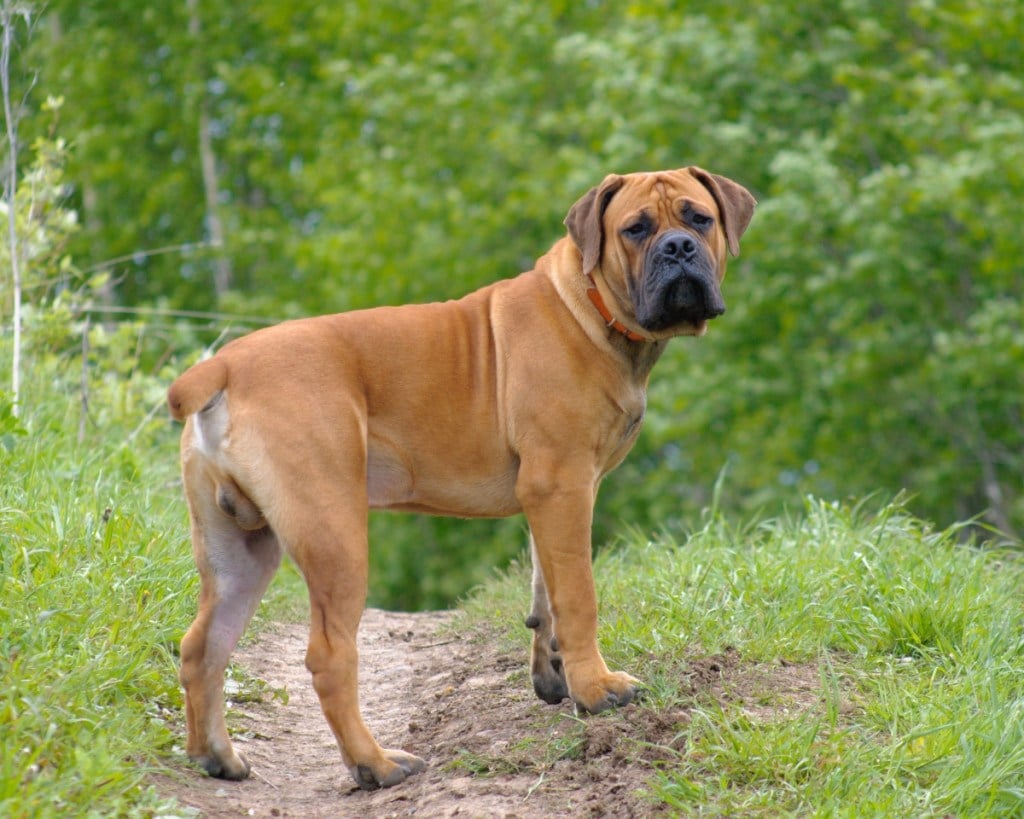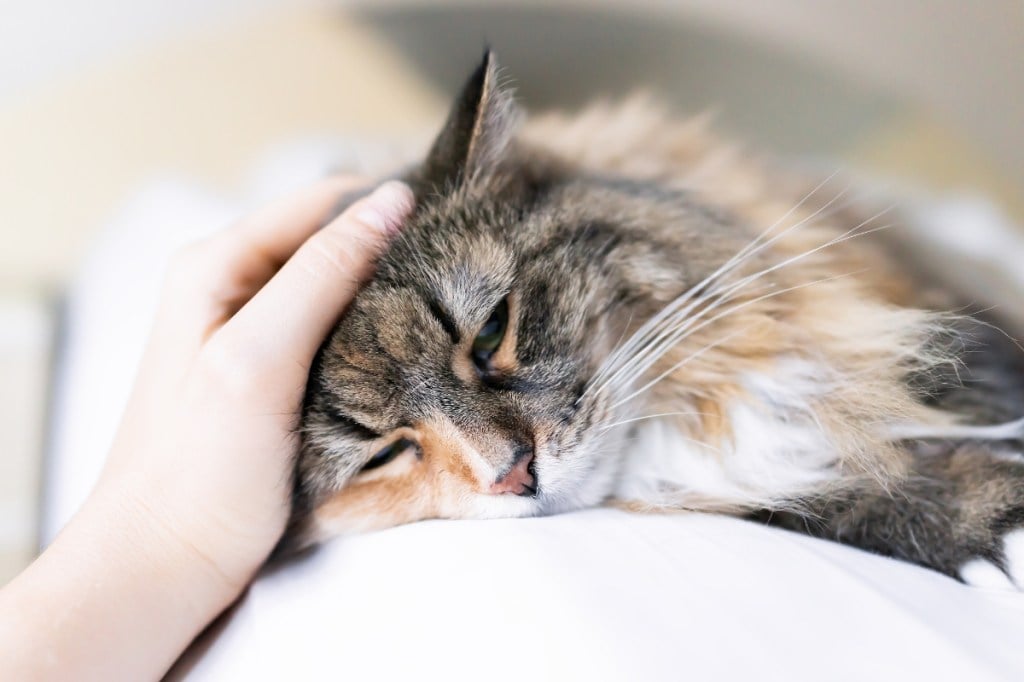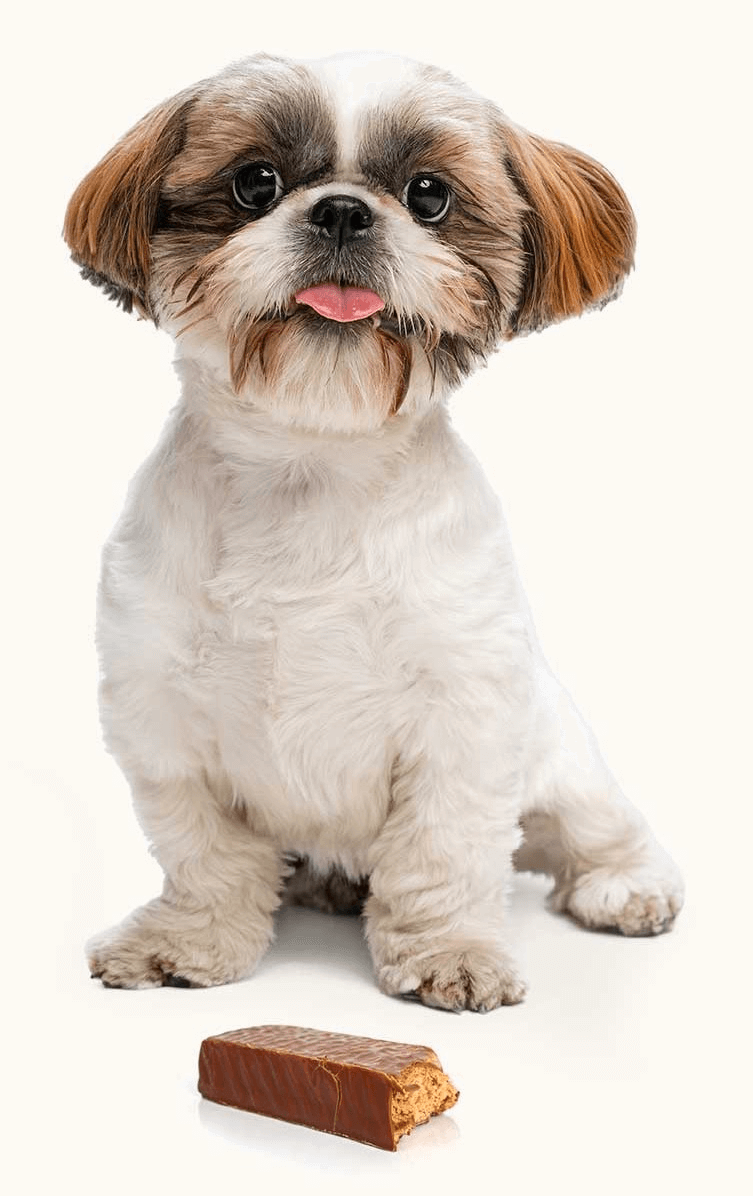Introduction to Black Russian Terriers
The black Russian terrier is a large, powerful, calm dog breed. These dogs are heavy-boned workers known for their confidence and courage. They are imposing and majestic dogs that can weigh as much as a human adult. Black Russian terriers, with their distinctive black coats, beards, and mustaches, are uniquely striking dogs that can easily win their way into your heart, but they’re certainly not for everyone.
In this Healthy Paws breed guide, we cover everything you need to know about the black Russian terrier, including the breed’s health, temperament, feeding, grooming, training, and insurance needs.
Size of Black Russian Terriers
When fully grown, a male black Russian terrier will be about 27 to 30 inches tall, while females stand 26 to 29 inches tall. Adult dogs usually weigh between 80 and 130 pounds but can get even bigger. These large dogs may continue growing slightly until they reach three years of age.
Here’s how big you can expect your black Russian terrier to get as the dog grows from puppyhood to adulthood:
| Weight Chart | 3 months | 6 months | 8 months | 12 months | 18 months | 36 months |
| Male black Russian terriers | 27-46 lbs. | 62-79 lbs. | 72-94 lbs. | 92-115 lbs. | 99-127 lbs. | 110-130+ lbs. |
| Female black Russian terriers | 24-40 lbs. | 59-72 lbs. | 71-88 lbs. | 85-102 lbs. | 90-109 lbs. | 94-125 lbs. |
Characteristics of Black Russian Terriers
Black Russian terriers make excellent guard dogs because their instinct is to protect their families and homes. They are fearless, confident, and intelligent dogs that feel a strong sense of responsibility.
As family pets, they need a job to do to feel purpose and contentment in life. With early socialization and consistent training, black Russian terriers become affectionate, gentle pets that can do well around children. Their natural instinct is to be wary of strangers, however, so they may need extra work to learn that most people should be viewed as friends. Due to their imposing size and independent nature, black Russian terriers are generally not a good choice for first time dog parents.
As you get to know a black Russian terrier’s personality, here’s what you can expect based on the breed characteristics:
| Breed Characteristic | Level (High, Medium, Low) |
| Affectionate with People | Medium |
| Good with Kids | High |
| Good with Pets | Medium |
| Need for Exercise | Medium |
| Energy Level | Medium |
| Intelligence Level | Medium |
| Able to Be Trained | Medium |
| Amount of Barking | Medium |
| Amount of Shedding | Medium |
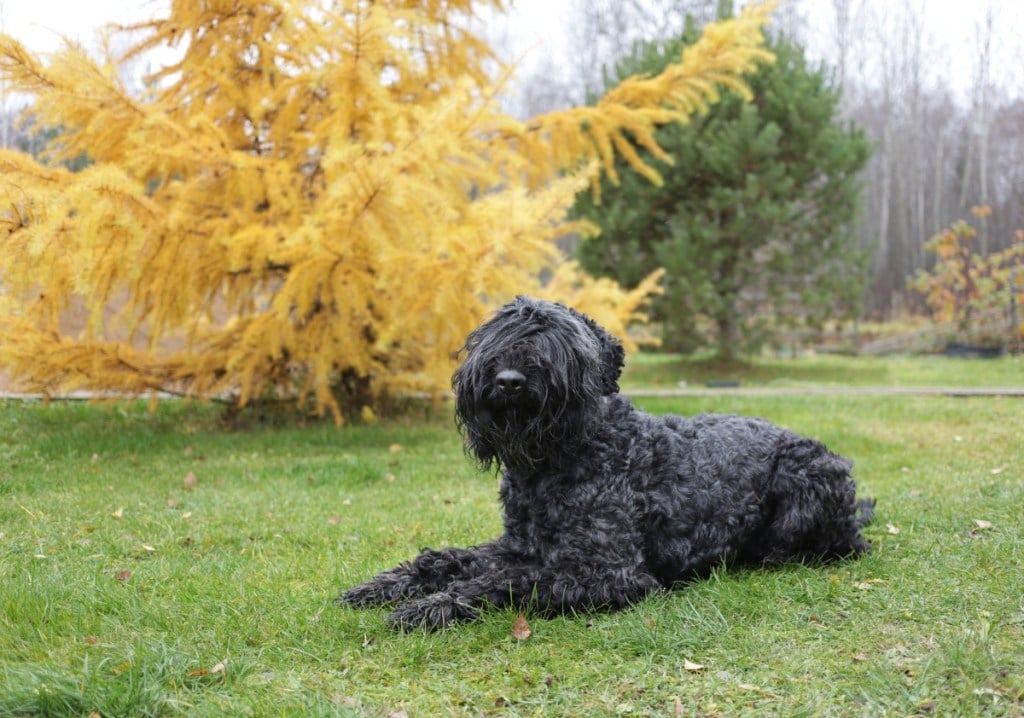
History of Black Russian Terriers
The history of the black Russian terrier is tied to scientists and breeders working together to develop a “superdog” for the Russian military. They incorporated numerous other breeds to create this dog, including Rottweilers, giant schnauzers, and Airedale terriers. Despite the dog’s name, black Russian terriers only have about 15 to 30 percent terrier in their genetic makeup.
Early black Russian terriers were used at military installations, remote prisons, and border crossings. In the mid-1950s, the dogs were sold to hobbyists and exhibitors because they weren’t needed as much for military work. They have been referred to as the Black Pearl of Russia.
The Soviet Ministry of Agriculture officially confirmed the breed in 1981, and the American Kennel Club recognized the breed in 2004. Modern breeders have worked to ensure that the black Russian terrier is a healthy and hardy breed today.
Black Russian Terrier Standard Information
According to the official standard of the black Russian terrier, the dog’s general appearance is robust, agile, powerful, balanced, and large. It has well-developed muscles and large bones to support its great strength and endurance. These dogs are also designed to be reliable, self-assured, and courageous.
Here is an overview of the breed standard information for black Russian terriers:
Head:
- Head is not less than 40 percent of the height of the dog at the withers
- Moderately wide skull with round cheekbones
- Eyes are dark, oval, and set wide apart
- Black eye rims
- Broad muzzle that slightly tapers toward the nose
- Teeth meet in a scissors bite
- Lips are black, thick, and fleshy
- Nose is large and black
- Ears are medium-sized and triangular-shaped
Neck, Topline, Body:
- Neck is thick, powerful, and muscular
- Neck is at 45 degrees to the backline
- Chest is oval, deep, and wide
- Tail is thick and set on moderately high
- Undocked tails are not penalized
Forequarters:
- Shoulders are laid back with broad and sloping blades
- Muscular upper arms
- Pasterns are thick, short, and nearly vertical
- Front dewclaws should be removed
- Feet are round and large with black toenails
Hindquarters:
- Well-boned and muscular hindquarters
- Hocks are moderately short and vertical when the dog is standing
- Rear dewclaws should be removed
Coat:
- Double coat that varies from 1 ½ to six inches when natural and untrimmed
- Outercoat is coarser than the undercoat
- Moustache and beard on the muzzle
- Need to trim the coat for show-level shape and upkeep
Color:
- Solid black or black with scattered gray hairs only
Gait:
- Smooth, fluid motion
- Extended head with a level backline
- Feet converge toward a center line during movement
- Can cover a lot of ground
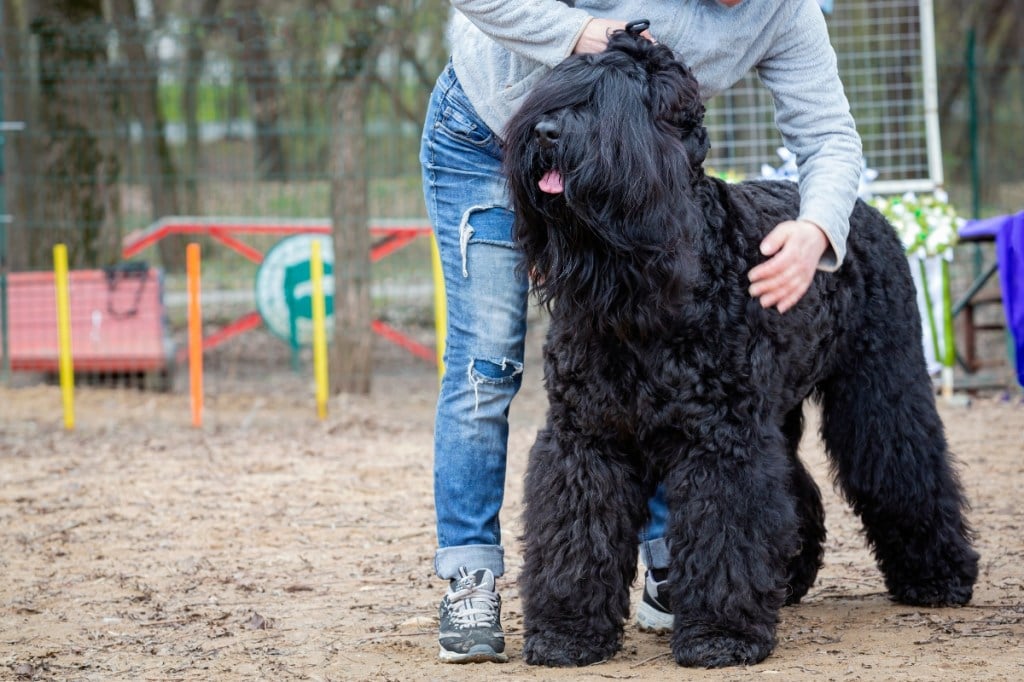
Caring for Black Russian Terriers
Many people find black Russian terriers to be aloof among strangers but devoted to their families. They require exercise, such as interactive playtime and long walks.
It is also essential to keep these dogs well-groomed by brushing the double coat to prevent matting. However, black Russian terriers do not shed excessively and have a wonderfully calm and agreeable temperament.
Here are some general tips for taking the best care of a black Russian terrier:
Best Living Environments:
- Homes with large yards to play in
- Not ideal apartment dogs
- Families with children are good
- Best for experienced pet parents
Type of Exercise:
- Need about 60 minutes of exercise daily
- Long neighborhood walks
- Hikes on trails with family members
- Prevent strenuous exercise until 18 months of age while the body is developing
Mental Enrichment:
- Intelligent dogs that require mental stimulation to prevent boredom and destruction
- Give the dog a job to do
- Puzzle cubes and toys
- Plenty of quality time with family members
Training Strategies:
- Can be stubborn during training
- Set clear expectations and be kind but firm with your dog
- Use positive reinforcement and logic-based training
Grooming Tips:
- Brush weekly to prevent matting
- Use a slicker brush, undercoat rake, and stripping comb
- Not excessive shedders when brushed regularly
- Don’t trim eyebrows or the beard or mustache
- Bathe only when dirty
- Brush teeth daily
- Trim nails about once per month unless worn down naturally outdoors
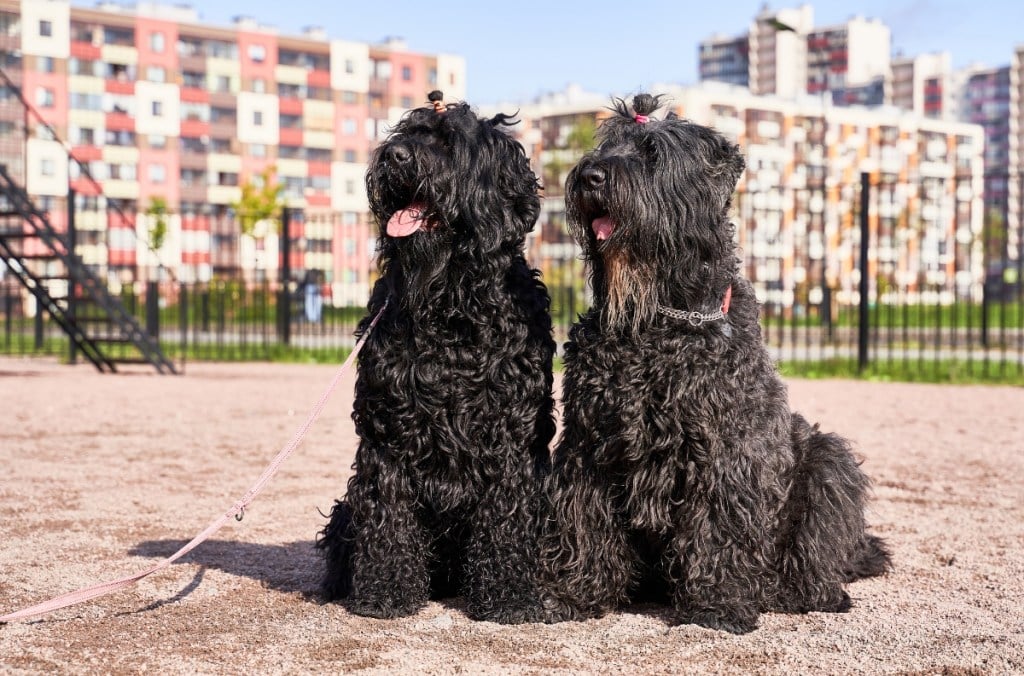
Common Health Problems of Black Russian Terriers
Black Russian terriers have good longevity for being a giant dog breed. They typically live 10 to 12 years, on average. The dogs live generally healthy and active lives; however, they are prone to some medical issues based on their genetics and breeding.
These are some of the most common health issues that arise with black Russian terriers:
- Hip dysplasia
- Elbow dysplasia
- Progressive retinal atrophy
- Urinary tract stones
- Gastric dilatation-volvulus (GDV or bloat)
- Allergies
The national breed club for black Russian terriers recommends the following health tests: hip evaluation, elbow evaluation, juvenile laryngeal paralysis & polyneuropathy DNA test, cardiac exam, and ophthalmologist evaluation.
Diet and Nutrition for Black Russian Terriers
Not surprisingly, black Russian terriers have hearty appetites because of their size. Most adults will thrive when eating a high-quality, nutritionally complete and balanced dog food. black Russian terrier puppies should generally eat a large breed puppy food until they are around 18 months old. If you feed your black Russian terrier homemade dog food, make sure you are working from a recipe that is designed by a veterinary nutritionist and is appropriate for your dog’s age and health status.
Feed the amount of dog food needed to keep your pet slim. You should be able to see your dog’s waist and feel (but not see) their ribs without having to press too hard. In general, puppies need more calories per day than adults, but a dog’s needs will vary with his or her activity level and other factors. Don’t leave food out all day for an black Russian terrier to graze on. Divide the total amount of food for the day into two to three meals for adults and three to four meals for puppies. Place the food out in a bowl at approximately the same time each day.
Black Russian terriers are at elevated risk for gastric dilatation-volvulus, which is why it is important to feed your dog multiple meals rather than just one large meal daily. Also, don’t feed them right before going out to exercise or play.
Your veterinarian can help you pick out a good dog food for your black Russian terrier and determine how much food to offer each day.
Where to Adopt or Purchase Black Russian Terriers
The Black Russian Terrier Club of America is the national parent club for the breed and offers resources for how to pick a breeder and a breeder referral listing.
The Black Russian Terrier Rescue Association is a separate entity and nonprofit organization that volunteers lead to rehome black Russian terriers. You can contact the organization to learn about available dogs, volunteer opportunities, or how to responsibly surrender your dog.
Related Breeds
If you love the idea of bringing a large, hardworking dog into your life, then you might also be interested to learn about similar and related breeds. Here are some dogs that share common characteristics with the black Russian terrier:
- Giant schnauzer
- Bouvier des Flandres
- Airedale terrier
- Rottweiler
- Newfoundland
- Caucasian shepherd dog
Pet Insurance for Black Russian Terriers
Pet insurance is a smart idea for black Russian terriers so that you can always afford the required veterinary care whenever your dog becomes sick or injured. Healthy Paws offers black Russian terrier insurance that covers emergency medical care for injuries, chronic conditions, specialty hospitals, cancer care, hip dysplasia, alternative care, and more.
You can take your black Russian terrier to any licensed vet you trust and then easily submit the bills to us for reimbursement through our website or mobile app.
Get your dog insurance quote today and set yourself up for a long and happy life with your black Russian terrier.
